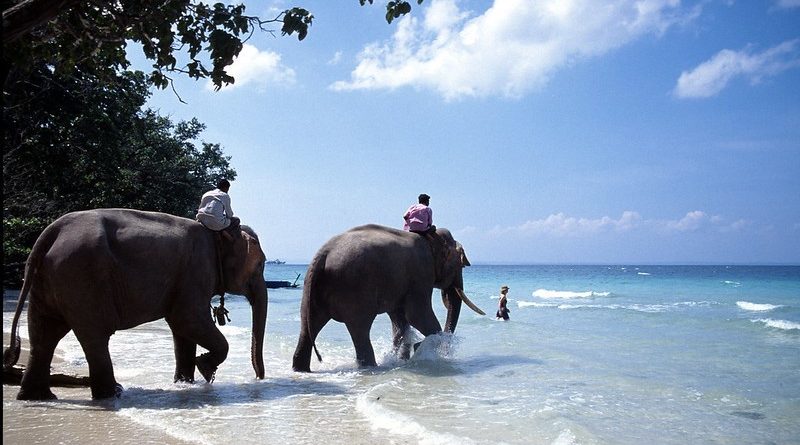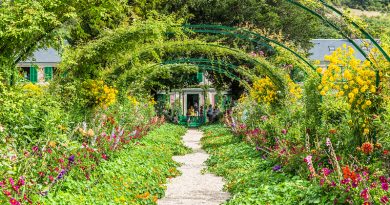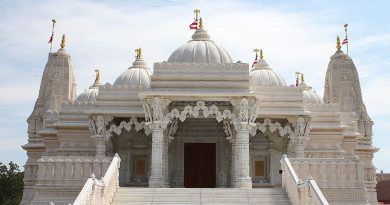A Guide to the States and Territories of India
India has a total of 28 states and 8 union territories, which include islands off its west and east coasts, sensitive regions bordering Tibet and Pakistan and the old French colony at Pondicherry , renamed Pudicherry on the south east coast .
The states of India are self governing administrative divisions, each having a state government. More states have been created in the past 20 years as larger states have been politically sub divided .The Indian Government has progressively renamed states, territories and cities since independence as part of its efforts to reclaim its pre colonial identity and there is now active discussion about renaming the country itself .
In 2000, three new states were created, namely:
- Chhattisgarh, from eastern Madhya Pradesh,
- Uttaranchal, from northwest Uttar Pradesh (renamed Uttarakhand in 2007), and
- Jharkhand, from southern districts of Bihar
Pondicherry was renamed Puducherry in 2007 and Orissa was renamed Odisha in 2011. Telangana was created in 2014 from ten former districts of north-western Andhra Pradesh.
The union territories are directly governed by the central government and don’t have police forces. They include Ladakh, whose capital is Leh , and Jammu and Kashmir, on its north western frontier with Pakistan . Offshore , the Lakshadweep Islands are in the Arabian Sea off its West coast and the Andaman and Nicobar Islands are off the east coast. Their capital is Fort Blair.
Andhra Pradesh
Known as the “rice bowl of India”. Andhra Pradesh is located on the southeastern coast of India and has a population of more than 50 million .It’s the seventh largest Indian state . It is bordered by Telangana in the northwest, Chhattisgarh in the north, Tamil Nadu in the south, Karnataka in the west, and the Bay of Bengal in the eastern side.
Andhra Pradesh is famous for its religious pilgrimage sites, historical monuments, caves, beaches and of course a rich culture.
Some of the best destinations to visit in Andhra Pradesh are Tirupati, Vijayawada, Visakhapatnam, Chittoor and Anantapur.
Arunachal Pradesh
Arunachal Pradesh shares its borders with Assam and Nagaland and international borders with Bhutan, Myanmar, and China.It’s is home to 26 major tribes of India and about 100 sub-tribes.
Assam
Located in the far north east of the country ,Assam shares a border with Bhutan and Bangladesh. It’s economy and society are dependent on the wildlife tourism of Kaziranga and Manas National Parks. These two wildlife parks are World Heritage Sites.
Bihar
The capital city of this north eastern state is Patna.The plains of Bihar are split by the river Ganges , which flows from west to east.A land that gave birth to two important religions Buddhism and Jainism, Bihar invites travellers to its numerous famous pilgrimage sites and ancient monuments. Being a land where Buddha once lived, Bihar is dotted with a number of Buddhist monasteries and is one of the best tourist destinations in India for the peace seekers.
Chhattisgarh
The state was formed by the partition of the southeast of Madhya Pradesh in 2000 and it has a population exceeding 20 million
Goa
Goa is surrounded by the Indian states of Maharashtra to the north and Karnataka to the east and south, with the Arabian Sea forming its western coast.It is India’s smallest state by area but has its highest GDP.Until it was annexed by India in 1961 Goa was the overseas territory of the Portuguese Empire. It’s capital is Panaji.
This tiny state in West India is famous for its plethora of beautiful beaches and old Portugese colonial sites such as Fort Aguada; Se Cathedral and St Xavier’s Church.
Gujarat
Gujarat on the western coast of India has a 1600 kilometre coastline , the longest of any Indian state . It’s population is over 60 milllion. Places to visit include UNESCO , temple and desert sites sites, wildlife sanctuaries and Gandhian heritage sites.
Haryana
The tiny state of Haryana and it’s capital has of Chsndigsrch and Gurgaon is considered one of the major information technology and automobile hubs of India.
Himachal Pradesh
The state shares a border with Jammu and Kashmir, Ladakh, Punjab, and also shares an international border with the Tibet Autonomous Region in China. The important contributors to the state’s economy are agriculture, horticulture, hydropower, and tourism.The capital is Shimla.
Himachal Pradesh’s beauty lies in its diversity. Here you find lush valleys like Kinnaur, Kullu and Kangra & the barren terrains of Lahaul & Spiti. The famous Hill stations of Shimla, Kullu & Manali are dotted with meadows, orchards, quaint villages & a rich colonial past.
Mizoram
Mizoram was previously part of Assam until 1972.
Jharkhand
Jharkhand is a state in eastern India and it shares its border with the states of Bihar, Uttar Pradesh, Chhattisgarh, Odisha, and West Bengal.
Karnataka
Karnataka is the largest state in South India and the sixth-largest in India. Its capital and largest city is Bangalore
Karnataka is known for its forts, palaces, and ancient towns and a past shaped by powerful dynasties, kings and empires. A heritage tour of Karnataka consists of visiting its famous palaces like the Mysore Palace, Bangalore Palace and Tipu Sultan’s Summer Palace. You can also visit forts such as Gulbarg, Raichur, Mirjan & Bidar. Each of these forts has played a key role in its history & are architectural splendours as well. A highlight is Hampi, the shining jewel of the Vijayanagara Empire. A UNESCO World Heritage Site, exploring its temples, streets and bazaars is to travel back in time. Other famous heritage sites are Badami, Pattakadal and Aihole.
Kerala
Kerala is a state on the Malabar Coast of India bordered by Karnataka, Tamil Nadu, and the Lakshadweep Sea.It’s capital is Thiruvananthapuram . It is most famous for its inland waterways and old Portugese settlements such as Cochin.
Madhya Pradesh
Madhya Pradesh is a state in central India with a population of more than 70 million.. Its capital is Bhopal
On the state’s rugged northern side, there are the famous temples of Khajuraho. . Two of India’s most famous wildlife sanctuaries- Kanha and Bandhavgarh can be found here . Towards the southwest are the Buddhist stupas of Sanchi and 15th-century citadels of Mandu.
Wildlife is a major part of Madhya Pradesh tourism attractions. It is known as India’s “Tiger State”, with more than 526 tigers. Thr Bandhavgarh National Park has the highest density of tiger population in India. Spotting a tiger here, or in the other wildlife parks, is quite easy. The other famous national parks are Bandhavgarh Tiger Reserve, Panna National Park and Pench National Park. Some of the wildlife sanctuaries in Madhya Pradesh are Bori, Bagdara, Phen, Ghatigaon, Ken Gharial and Pachmarhi.
Maharashtra
Maharashtra is divided into 6 divisions and 36 districts, with the state capital being Mumbai, also the most populous urban area in India.
The Godavari and the Krishna are the two major rivers in the state. Nearly 60% of cultivable land in Maharashtra is producing Jowar.
it is the third-largest state by area in India. Pune and Nashik are known as the ‘Oxford of the East’ and the ‘Wine Capital of India’ respectively.
Maharashtra – is brimming with an array of colorful shrines; a remarkable collection of caves; golden beaches lined with swaying palm trees; historic hotspots with strong past connection; and oodles of emerald hill stations under the canopy of lush western ghats..The state is primarily known for its ancient Ellora and Ajanta caves, and pilgrim destinations.
Manipur and Meghalaya
These two states were formed by carving out two districts from the state of Assam.
Nagaland
Nagaland is bordered by the state of Arunachal Pradesh, Assam, Manipur, and Myanmar.
Odisha
Formerly , Orissa,,this is the 8th largest state by area and the 11th largest by population. The state has the third-largest population indigenous tribes in India.
Punjab
The most famous site here is the Golden Temple in Amritsar which is the holiest pilgrimage site in Sikhism. There are also historic such as the Jallianwala Bagh and Wagah which hosts the Wagah Border Ceremony. Punjab is also home to several museums like Maharaja Ranjit Singh Museums and wildlife sanctuaries such as the Chhatbir Zoo,
Rajasthan
Rajasthan covers more than 10 per cent of India’s landmass , much of it desert . It’s capital is Jaipur . The major tourist attraction of Rajasthan are its havelis, palaces and forts . Some of the most famous and most visited forts in Rajasthan are Chittorgarh, Mehrangarh, Jaisalmer, Jaigarh and Junagadh Forts. Of these, the Mehrangarh Fort in Jodhpur is spread over 5 kilometers . Chittorgarh Fort is also a much visited attraction, and is the largest fort in Asia. It is spread over an area of 700 acres, extending to 3 km in length and 13 km in peripheral length. The exquisite architecture isn’t only confined to the palaces and forts as Rajasthan also boasts impressive Hindu & Jain temples like Dilwara Jain Temples and Eklingji Temple.
Sikkim
Sikkim is a state in northeastern India and it is the least populous and second smallest among the Indian states.
A part of the Eastern Himalaya, Sikkim is notable for its biodiversity, including alpine and subtropical climates, as well as being a host to Kangchenjunga, the highest peak in India and third highest on Earth. Sikkim’s capital and largest city is Gangtok.
Almost 35% of the state is covered by the Khangchendzonga National Park which is a UNESCO World Heritage Site. Sikkim’s economy is largely dependent on agriculture and tourism.
Tamil Nadu
Tamil Nadu lies in the southernmost part of the Indian subcontinent and is bordered by the union territory of Pondicherry and the South Indian states of Kerala, Karnataka, and Andhra Pradesh.
The state shares a maritime border with the nation of Sri Lanka. The capital is Chennai.Known for is religious tourist sites the state is home to around 33,000 ancient temples, stroked in the Dravidian style of architecture. The state is popularly known as the Land of Temples.
Temples include the Sri Ranganathaswamy Temple,Thillai Nataraja Temple, Annamalaiyar Temple, Ekambareswarar Temple, Jambukeswarar Temple, Kailasanathar Temple, Tiruvarur Thyagaraja Swamy Temple,and Vaitheeswaran Temple .
Tripura
Forests cover more than half of the area, in which bamboo and cane tracts are common. Tripura has the highest number of primate species found in any Indian state.
Telangana
Telangana is a state in Southern India with a population of almost 40 million . It’s capiital is Hyderabad
Famed for its decades-long struggle for an independent state. Separated from the state of Andhra Pradesh in South India, Telangana relishes its freedom from June 2, 2014, and is nestled between the states of Tamil Nadu and Andhra. With Hyderabad being its capital, the state enjoys an opulent heritage of architectural marvels.
Uttar Pradesh
With over 200 million inhabitants, Uttar Pradesh is the most populous state in India
The state is divided into 18 divisions and 75 districts, with the state capital being Lucknow, and Allahabad serving as the judicial capital.
It shares an international border with Nepal.
The 4th largest state in India Uttar Pradesh is home to the iconic Taj Mahal in Agra, which of course is its top tourist destination. The North Indian state is also home to numerous significant Hindu temples, Muslim places of worship (Dargah and Masjid) as well as Christian pilgrimage destinations affirming being an important religious place in the country. The holy city of Varanasi is located in Uttar Pradesh.
Uttarakhand
Uttarakhand shares international borders with China and Nepal and shares borders with the Indian states Uttar Pradesh and Himachal Pradesh.
West Bengal
West Bengal is a state in the eastern region of India along the Bay of Bengal.
With over 91 million inhabitants, it is the fourth-most populous state
It shares its borders with Bangladesh in the east and Nepal and Bhutan in the north. It also borders the Indian states of Odisha, Jharkhand, Bihar, Sikkim, and Assam. The capital is Kolkata.
Kolkata, is as cosmopolitan a city as any. In close proximity lie the Sundarbans, a UNESCO World Heritage Site which is home to the Royal Bengal Tiger. Coastal areas like Digha and Mandarmani are popular tourism places in this state which attract their fair share of beach lovers. A different travel experience awaits you in places like Bishnupur, Bankura and Shantiniketan, which showcase the rich cultural heritage of the state.
Hill stations like Darjeeling, Kalimpong and Labha are exciting getaways from the plains and are known for their distinct culture and lifestyle. Wildlife sanctuaries like Jaldapara and Gorumara draw your attention to its rich wildlife.
Destination : India




